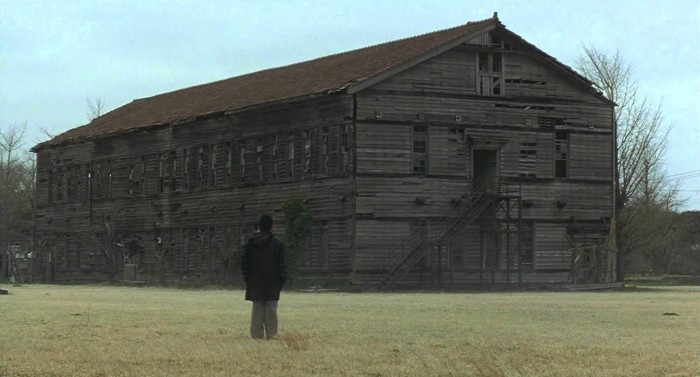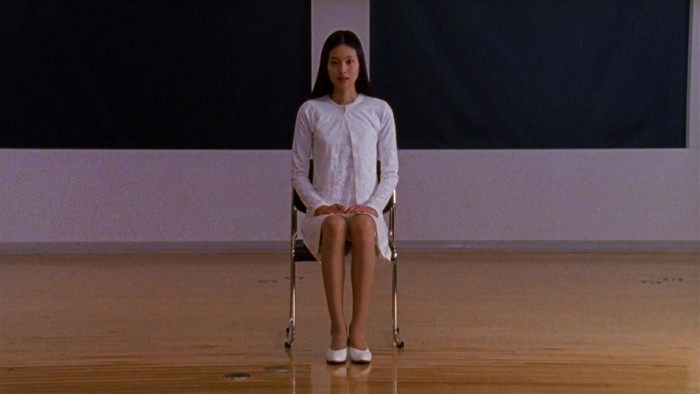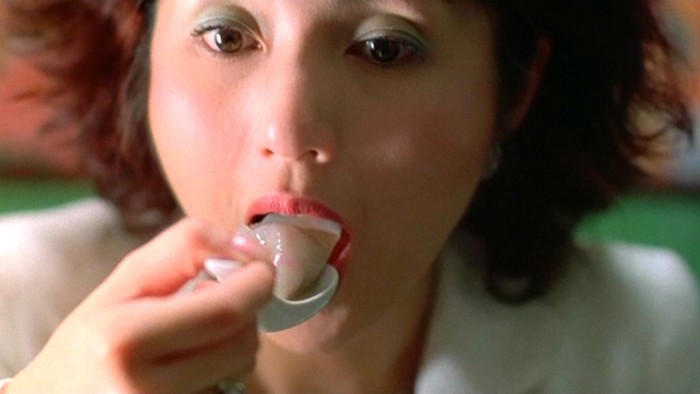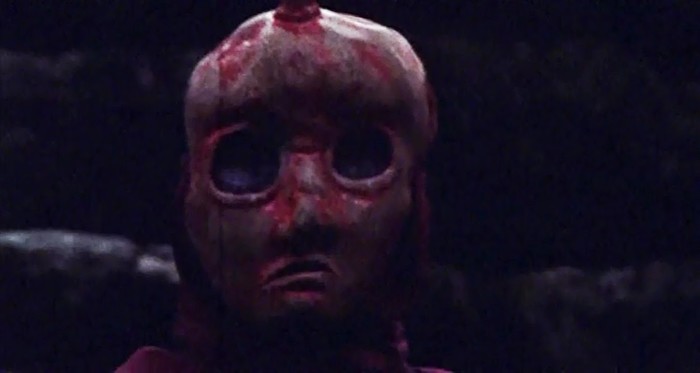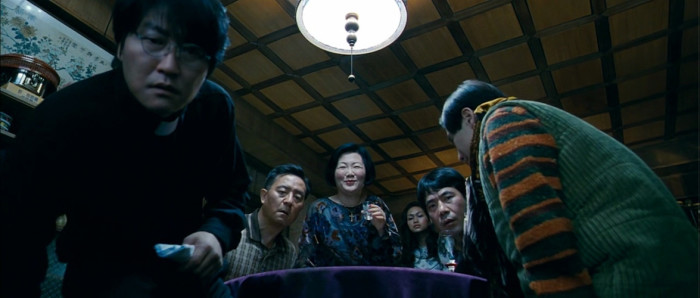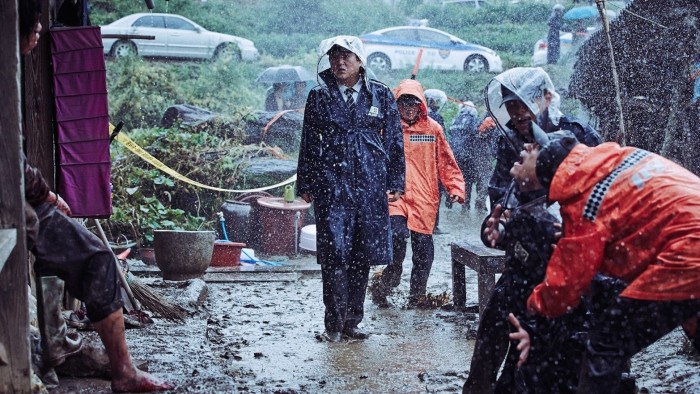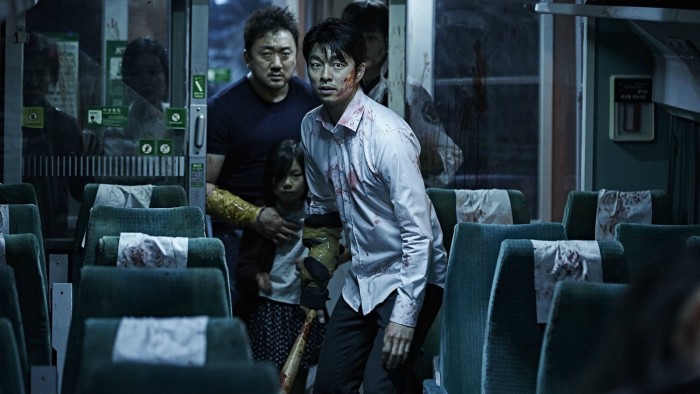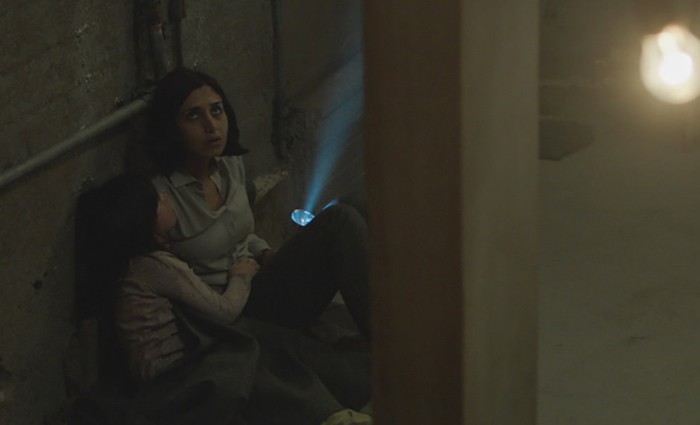8 Great Asian Horror Films That Hollywood Hasn't Remade
In the 2000s, Western audiences gained more exposure to Asian horror films through Hollywood remakes starring western actresses like Naomi Watts, Sarah Michelle Gellar, and Jennifer Connelly. Kickstarted by the commercial success of The Ring, the remake machine quickly went into overdrive and eventually sputtered out. Along the way, American audiences came to know certain foreign film titles through association. The American DVD releases of Takashi Shimizu's Ju-on: The Grudge and Hideo Nakata's Dark Water were both timed to coincide with the theatrical runs of their remakes.
But there is a whole other world out there beyond those remakes. Hollywood did not get its hands on every noteworthy title in Asian horror.
Let's take a spoiler-free look at eight genre gems that have miraculously slipped through the cracks of the Asian horror remake factory. With no Western versions to give away their best moments, these eight films offer pure, undiluted scares, shocks, and chills. They are one-of-a-kind.
Cure (1997)
Murder as post-hypnotic suggestion. A serial killer who never actually kills, but merely incites other people to do it.
Detective Kenichi Takabe (played by Koji Yakusho of Shall We Dance? fame) is drawn into the mystery of a series of homicides linked by similar details but different perpetrators. "The devil made them do it is all I can guess," says a psychiatrist consulting on the case. Takabe is a person who has been taught never to show emotion. He lives in a repressed society where impatient men mutter curses under their breath at the dry cleaners, only to flip a switch and feign politeness when the clerk returns to the counter.
At home, Takabe is saddled with the burden of a wife who is mentally unwell. They tell themselves they're going to take a trip somewhere when the case over.
When we first meet the killer in Cure, he is on a beach, looking up the sky, as if that is where he came from and he is slightly confused about how he got down from there. He then turns, his face an indistinct blur, and begins walking toward the camera, accompanied by a rising ambient hum. What he brings with him is a head full of amnesia and a barrage of inane questions. These questions ("Who are you? Do you understand my question?") have a destabilizing effect on his victims, breaking down their superego, offering them the cure for repression.
Some of the movies on this list might take some tracking down, and Cure is one of those. It's the very definition of a hidden gem. Horror aficionados might know it, but in the West, it seems to have escaped the spotlight.
With Cure, director Kiyoshi Kurosawa crafted a film that I honestly believe belongs on the same plane as The Shining. That is not a random comparison, either, as there is a clinical, Kubrickian quality to this film. The camera always seems to linger at an icy remove, building up a suffocating stillness and infusing the movie with dread. When the editing takes a turn, allowing quick, disquieting flashes, we get the feeling that something bad is about to happen. That feeling of unease begins to permeate the film more and more as it shifts from a crime thriller into something darker and more obtuse, mingled with concepts of mesmerism, animal magnetism, and "soul-conjuring." It's my favorite Japanese movie.
Audition (1999)
Directed by Takashi Miike, who also helmed the gruesome Ichi the Killer and the samurai film 13 Assassins, Audition is perhaps the most well-known movie on this list. But Audition's notoriety is not the reason I'm going to say less about it than the other films on this list. The reason I'm going to say less about it is that I went into the movie blind, and if at all possible, you should, too. If you've never heard any plot details about Audition, don't let your curiosity get the better of you. Just watch the movie and be deeply disturbed.
I still remember the first time I saw this movie. I was with some college friends and we decided to have a foreign film night. I don't even remember if I knew that Audition was a horror movie when we started watching it. I was just along for the ride that night...and what a ride Audition turned out to be. This is a film that really gets under the skin.
If you're in the mood for a good horror novel, you might also check out In the Miso Soup by Ryu Murakami, the Japanese author whose 1997 book provided the source material for Audition. An English translation of the book was finally released in conjunction with the film's 10-year anniversary in 2009.
Dumplings (2004)
Due to governmental restrictions on movie content, Mainland China, like Vietnam, has not produced a wealth of great horror flicks. Hong Kong lives outside these restrictions, and while it is more well-known for its action cinema, the country did produce The Eye (2002) as a joint venture with Singapore. The Hollywood remake machine promptly gobbled up that film...but it would likely choke on Dumplings.
Who doesn't like dumplings? You can steam them; you can boil them; you can fry them. You can stuff them with cabbage and pork or...other things.
Written by Lillian Lee and directed by Fruit Chan, this film revolves around a retired actress, played by Miriam Yeung, who seeks out a culinary whiz known as Aunt Mei whose special dumplings — made in her home kitchen — are said to restore youth and vitality. Fans of ABC's Lost may remember the face of Bai Ling from that infamous season 3 episode where the flashbacks were devoted to the story of how Jack Shepherd got his tattoo in Thailand. Under heavy eyeshadow, Ling played Jack's lover and the artist of his forbidden tattoo.
Here she plays a kind of fairy-tale witch in wild pants. Dumplings is a film that is more horrific than scary. It reveals the secret ingredient of Aunt Mei's dumplings in an oblique manner. While the film does show certain ghastly images and could very much be considered transgressive in terms of its subject matter, it does not feature a lot of gratuitous gore.
This is a film with more on its mind. In the midst of playing with stomach-churning taboos, Dumplings touches on China's one-child policy and will have you thinking about human vanity and the pressure women undergo to maintain an unrealistic beauty standard as they age.
Many horror movies suffer from cheap production value, but Dumplings feels like more of a proper film, one that benefits from the cinematography of Christopher Doyle, who shot the visually stunning Hero starring Jet Li and who frequently collaborates with Wong Kar-Wai (In the Mood for Love).
Noroi: The Curse (2005)
Noroi: The Curse is a strange little Japanese found-footage horror film whose plot defies succinct explanation. Let's just say it involves a psychic little girl, a man in a tinfoil outfit, ectoplasmic worms, and demon called Kagutaba.
Similar to The Blair Witch Project, the movie is framed around the conceit of a documentary filmmaker having mysteriously vanished and left behind footage showing the events leading up to his disappearance. This particular filmmaker happens to be a paranormal researcher whose investigation of multiple leads introduces us to a lot of different story elements in the first hour. At first, some of those elements seem like loose threads, but soon the movie begins drawing the threads together into a web of intricate mythology. It's like seeing a whole season of The X-Files condensed down into two unsettling hours.
The creepiest part of the movie comes when it ventures to the former site of Shimokage, a village turned dam where people in the neighboring town hang sickles over their doors to ward off evil spirits and where local historians dig up old recordings of rituals performed at the local Demon Shrine. There really is such a thing as demon shrines (oni jinja) in Japan, and while these places are not usually built around the tradition of "sorcerers" summoning demons as in the movie, just the idea of a remote place where demons are somehow worshipped makes for some spooky imagination fodder.
One thing Japanese horror has going for it is that it can draw from a deep well of history and culture that goes back thousands of years. America is a comparatively young nation with less of a mystique about it. When a university ethnologist in Noroi: The Curse presents a 200-year-old document with mention of an unknown entity, Kagutaba (whose name means "a tool capable of causing disasters"), it feels like a that could be found in real Japanese history.
This just scratches the surface of Noroi: The Curse. There are other creepy elements to this movie beyond the sight of the village priest donning his ritual Kagutaba mask. After all, this movie shares something awful in common with the previous entry on this list in that it evinces, shall we say, the same unorthodox taste in food.
Thirst (2009)
Everybody has their own favorite Park Chan-wook film. Others may prefer Oldboy, The Handmaiden, or even his English-language psychological thriller Stoker. But Thirst is the film that first really sold me on the director's brand of twisted genius. It is a vampire movie par excellence.
The movie tells the story of a Catholic priest named Sang-hyun, who volunteers for an experimental medical procedure to cure a deadly disease, only to wind up infected with the disease and in need of a blood transfusion. His skin breaks out in boils and the only way to fight back the illness is to keep replenishing his system with new blood from comatose hospital patients. Worshipped by clamoring mobs as a survivor of the disease, he secretly subsists as a vampire, complete with superhuman strength and a sensitivity to sunlight.
The movie takes its time setting things up. In his new guise as survivor and savior, Sang-hyun enters the orbit of a sickly old friend who lives with his domineering mother and his put-upon wife, Tae-ju. Sang-Hyun is attracted to Tae-ju. This sets the stage for what's to come.
Thirst is a film that rewards patience. It's a vampire movie, one of my five favorites, but it's also a kind of brutal love story whose twisty pleasures make it understandable why The New York Times would call Park Chan-wook "the man who put Korean cinema on the map."
The Wailing (2016)
In January of last year, /Film's own Jacob Hall wrote about how 2016 was a banner year for horror. It was also a pretty good year for South Korean horror, with the country delivering up not one but two genre entries that scored a 95% or better on Rotten Tomatoes (you'll hear about the other film in a moment). Right now, The Wailing is in a precarious position where there have been talks of a Western remake involving Ridley Scott's Scott Free Productions. People at the production company apparently think highly enough of the film that they have mentioned it in the same breath as The Exorcist and Seven.
It might just be every bit the masterpiece those films are. This is a film that unsettled me like no other in recent memory. The film conjures such a vivid sense of place with its rainy mountain village that, as I write this, that village almost seems more real than half the places I have visited on Earth.
The story follows a local police officer (Kwak Do-won) who is investigating a weird disease and a series of violent murders that have broken out in the village. Suspicion falls on a Japanese fisherman (Jun Kunimura) who has taken up shelter in a remote house nearby. South Korea and Japan have a fraught relationship; a 2014 BBC World Service poll showed that South Korea is the country with the second most negative perception of Japan in the world. One of the ways The Wailing deftly manipulates the local segment of its audience is by playing upon people's xenophobic fears. The film initially demonizes the foreign stranger, only to make you wonder if it plans to subvert that stereotype because having him be the bad guy would just be too obvious..
The Wailing starts out looking like it is going to be a horror comedy like South Korean favorite The Host. Before long, it has descended into tragedy, a nightmare of possessed daughters and shaman rituals. The exorcism scene alone is a masterclass in cross-cutting.
Being deceived is a basic human fear, even when it comes in the form of self-deception. What's interesting about The Wailing is how it uses audience manipulation as a way of commenting on the nature of human existence. If there is such a thing as angels and demons, spiritual entities capable of exerting influence over human behavior, then what's scary is that a person might not always know enough to recognize the demons from the angels.
Train to Busan (2016)
A father boards a train with his daughter. Unbeknownst to him and the other passengers, the zombie apocalypse is breaking out right as they leave the station. The last passenger to board is actually a person who has been infected. This sets the stage for a white-knuckle ride aboard Yeon Sang-ho's Train to Busan.
Writing for /Film back in November, Rob Hunter listed Train to Busan as one of the best train movies you've never seen. It's not my favorite South Korean train movie; that honor belongs to Bong Joon-ho's Snowpiercer. It is, however, a much-needed shot of adrenaline back in the arm of the zombie subgenre, whose slow, shuffling steps have — in terms of recent mainstream visibility — become all but synonymous with the plodding pace of a certain uneven, hour-long television drama on AMC.
Having invested seven full seasons, 99 episodes, in The Walking Dead, only to sorta-kinda casually give up watching it last year, I hesitate to impugn the show now. So instead I'll let Stephen King do that. Stephen King tweeted that Train to Busan "makes The Walking Dead look tame." This film is a swift-moving crowd-pleaser that ratchets up the tension and foregoes crossbows or katana swords to just give you big burly guys with their arms thickly padded in tape, punching zombies in the face.
It's also a movie where you are made to really care about the characters, to the point where the viewer gets emotionally invested when things get a little sentimental. That humanity is earned rather than manufactured.
Under the Shadow (2016)
When people think "Asian horror," they most often think East Asian horror. But Asia is a big continent that is also includes the Middle East. In recent years, Iranian filmmakers like Asghar Farhadi (A Separation) and filmmakers of Iranian descent like Ana Lily Amirpour (A Girl Walks Home Alone at Night) have been gaining more recognition on the international scene.
Under the Shadow is an international co-production between the United Kingdom, Jordan, and Qatar. It is filmed in the Persian language by an Iranian-born filmmaker and its setting of Tehran during the Iran-Iraq War plays an integral part in the story. It forces the main character, a mother named Shideh, into a position where she cannot continue her medical studies and her husband is sent off to war. This leaves Shideh to care for their daughter on her own in a building that is undergoing constant bombardment from artillery shellings. One of those shellings leaves a missile lodged in an upstairs apartment and that missile may or may not have had a malevolent djinn riding its head. Soon, neighbors begin evacuating the city and Shideh is left alone in the building with her daughter and the djinn.
After two years, Under the Shadow still has a 99% Tomatometer rating. If I have any qualms about the film, it is only that the final physical manifestation of the monster, as it were, is not nearly as scary as the thick tension that builds up while it is still being portrayed largely as an off-screen threat.
In her Sundance review for /Film, Angie Han compared the film to The Babadook and talked about how the monster is more effective when you consider it "as an embodiment of Sideh's anxieties." One of the movie's scariest scenes actually involves Sideh fleeing from the supernatural, only to find herself in trouble with the police for leaving home without the traditional head covering that she is required, by law, to wear. Her plight evokes sympathy: this is a woman who lives under the shadow of war and a controlling regime.
As with other films on this list, imagining oneself in the same circumstances, beyond the usual freedoms or cultural norms we take for granted, evokes a different kind of horror.

